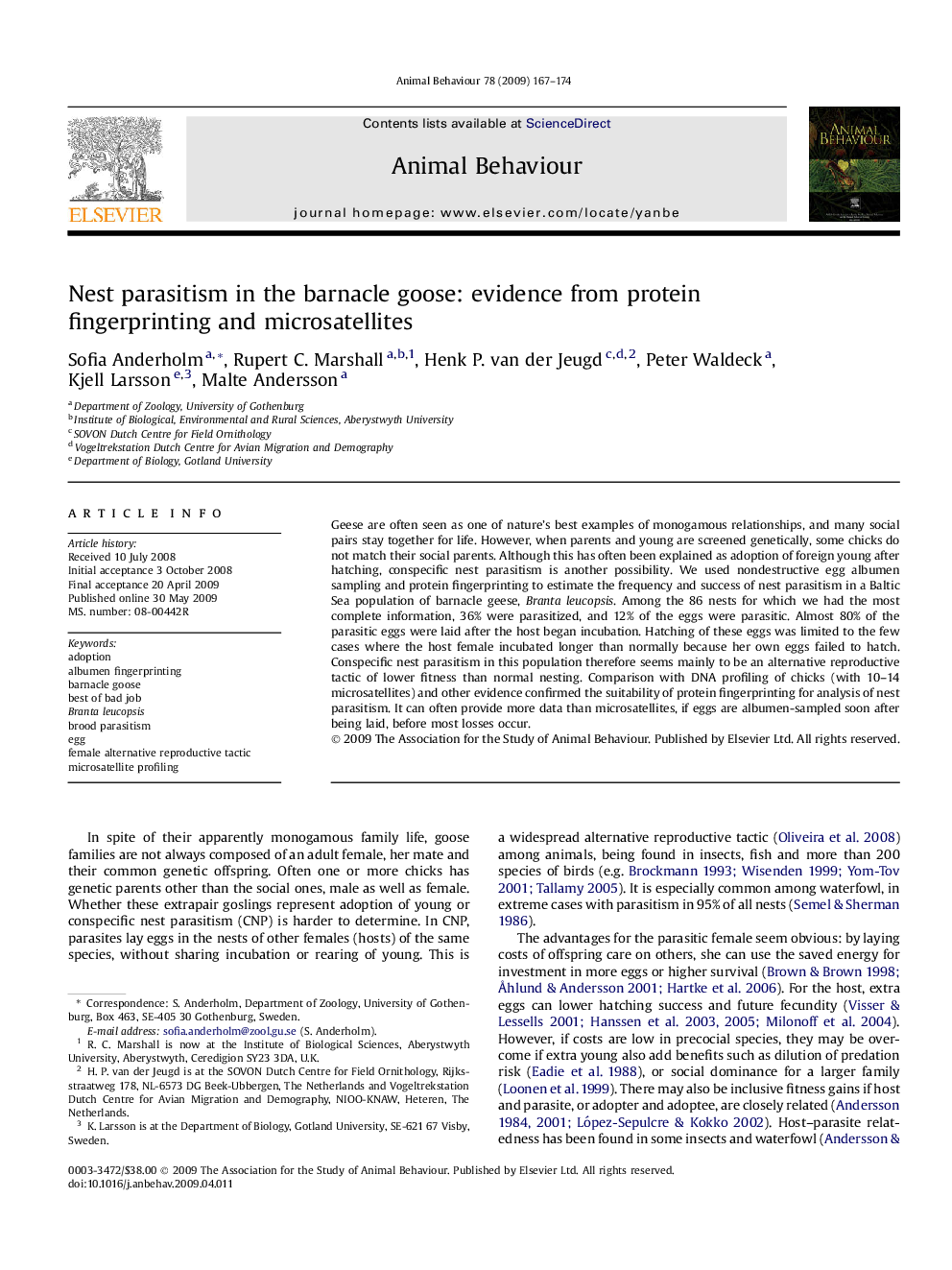| Article ID | Journal | Published Year | Pages | File Type |
|---|---|---|---|---|
| 2417597 | Animal Behaviour | 2009 | 8 Pages |
Geese are often seen as one of nature's best examples of monogamous relationships, and many social pairs stay together for life. However, when parents and young are screened genetically, some chicks do not match their social parents. Although this has often been explained as adoption of foreign young after hatching, conspecific nest parasitism is another possibility. We used nondestructive egg albumen sampling and protein fingerprinting to estimate the frequency and success of nest parasitism in a Baltic Sea population of barnacle geese, Branta leucopsis. Among the 86 nests for which we had the most complete information, 36% were parasitized, and 12% of the eggs were parasitic. Almost 80% of the parasitic eggs were laid after the host began incubation. Hatching of these eggs was limited to the few cases where the host female incubated longer than normally because her own eggs failed to hatch. Conspecific nest parasitism in this population therefore seems mainly to be an alternative reproductive tactic of lower fitness than normal nesting. Comparison with DNA profiling of chicks (with 10–14 microsatellites) and other evidence confirmed the suitability of protein fingerprinting for analysis of nest parasitism. It can often provide more data than microsatellites, if eggs are albumen-sampled soon after being laid, before most losses occur.
